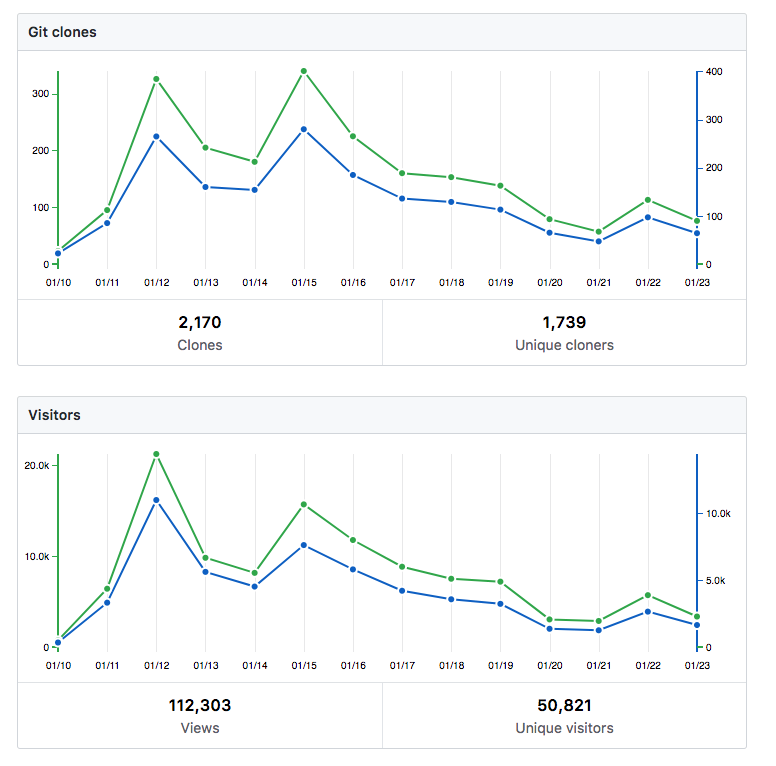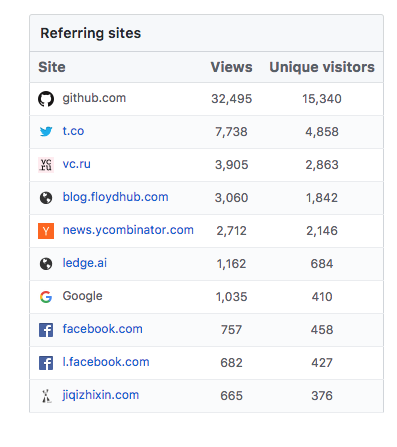Machine learning portfolio tips
1. Good ideas come from ML sources that are a bit quirky.
- NeurIPS from 1987 - 1997
- Stanford’s CS224n & CS231n projects
- Twitter likes from ML outliers
- ML Reddit’s WAYR
- Kaggle Kernels
- Top 15-40% papers on Arxiv Sanity
1. Good ideas come from ML sources that are a bit quirky.
- NeurIPS from 1987 - 1997
- Stanford’s CS224n & CS231n projects
- Twitter likes from ML outliers
- ML Reddit’s WAYR
- Kaggle Kernels
- Top 15-40% papers on Arxiv Sanity
2. Time is your unfair advantage.
Untangle student papers, e.g. back-propagation was introduced by a Finnish Master student. Revisit old ideas that might work now (ANN), or tinker with the StyleGAN-BigGAN hybrid that was just released in a Kaggle kernel.
Untangle student papers, e.g. back-propagation was introduced by a Finnish Master student. Revisit old ideas that might work now (ANN), or tinker with the StyleGAN-BigGAN hybrid that was just released in a Kaggle kernel.
3. Avoid idea intoxication.
Newcomers often come up with similar ‘gut ideas’ and have a habit of reasoning themselves into believing they are novel. At best, they ship a me-too idea, but most become too euphoric to be productive.
Newcomers often come up with similar ‘gut ideas’ and have a habit of reasoning themselves into believing they are novel. At best, they ship a me-too idea, but most become too euphoric to be productive.
4. Polish diamonds 
We tend to be critical of other’s ideas but seldom judge or own ideas. Thus it's better to first scout other’s research directions. And then improve a direction that's already promising.

We tend to be critical of other’s ideas but seldom judge or own ideas. Thus it's better to first scout other’s research directions. And then improve a direction that's already promising.
5. Reason first. Gut last.
For a month, index a few hundred project directions and create a short-list by rating projects. Then select the project direction that makes you the most excited.
For a month, index a few hundred project directions and create a short-list by rating projects. Then select the project direction that makes you the most excited.
6. Identify knowledge gaps. Fill them. Repeat.
Reproduce the most relevant project from scratch. One paper can take several months to understand and recreate. That’s fine. Take the time you need. https://www.reddit.com/r/MachineLearning/comments/73n9pm/d_confession_as_an_ai_researcher_seeking_advice/dnrsmh9/?utm_source=share&utm_medium=web2x
Reproduce the most relevant project from scratch. One paper can take several months to understand and recreate. That’s fine. Take the time you need. https://www.reddit.com/r/MachineLearning/comments/73n9pm/d_confession_as_an_ai_researcher_seeking_advice/dnrsmh9/?utm_source=share&utm_medium=web2x
7. Documenting and sharing projects online creates discomfort. Do it anyway.
Here’s how ~1000 students document Core War: https://github.com/search?p=100&q=corewar&type=Repositories
I spent a few extra hours to document it and share it on Reddit, here’s the difference: https://github.com/emilwallner/Corewar
Here’s how ~1000 students document Core War: https://github.com/search?p=100&q=corewar&type=Repositories
I spent a few extra hours to document it and share it on Reddit, here’s the difference: https://github.com/emilwallner/Corewar
8. For each project, you have 30 seconds to create a wow-moment.
Build a graphical user interface or generate quality visual results. Use bullet points, simple graphs, video walkthroughs, gifs, and large explainer images.
Another example: https://github.com/emilwallner/Coloring-greyscale-images
Build a graphical user interface or generate quality visual results. Use bullet points, simple graphs, video walkthroughs, gifs, and large explainer images.
Another example: https://github.com/emilwallner/Coloring-greyscale-images
9. Most will spend <40 seconds to run your project.
Create a one-click install with: @FloydHub_ , @runwayml, @HelloPaperspace, Google Colab, and @kaggle kernels in relevant competitions. A plus for pip packages and model layers.
Create a one-click install with: @FloydHub_ , @runwayml, @HelloPaperspace, Google Colab, and @kaggle kernels in relevant competitions. A plus for pip packages and model layers.
10. The first 1000 project views are the hardest.
On Twitter, you need a retweet from a credible person with >50K followers to gain traction. On HN/Reddit you need 5-10 upvotes within the first 30 minutes to start trending.
On Twitter, you need a retweet from a credible person with >50K followers to gain traction. On HN/Reddit you need 5-10 upvotes within the first 30 minutes to start trending.
11. Karma and a bit of luck will make it take off.
Sometimes you have to relaunch your project a few times. Social media has a component of luck. There is also an aspect of karma. Being active and supportive online can often help you reach a critical mass.
Sometimes you have to relaunch your project a few times. Social media has a component of luck. There is also an aspect of karma. Being active and supportive online can often help you reach a critical mass.
Further readings 
Michael Galarnyk: https://towardsdatascience.com/how-to-build-a-data-science-portfolio-5f566517c79c
Eric Jang: https://blog.evjang.com/2016/07/how-to-get-internship.html
Stanford: http://cs229.stanford.edu/projects.html
Andrej Karpathy: http://karpathy.github.io/2016/09/07/phd/
Rachael Tatman: https://www.kaggle.com/rebeccaturner/data-science-portfolio-tips
Edouard Harris: https://towardsdatascience.com/the-cold-start-problem-how-to-build-your-machine-learning-portfolio-6718b4ae83e9

Michael Galarnyk: https://towardsdatascience.com/how-to-build-a-data-science-portfolio-5f566517c79c
Eric Jang: https://blog.evjang.com/2016/07/how-to-get-internship.html
Stanford: http://cs229.stanford.edu/projects.html
Andrej Karpathy: http://karpathy.github.io/2016/09/07/phd/
Rachael Tatman: https://www.kaggle.com/rebeccaturner/data-science-portfolio-tips
Edouard Harris: https://towardsdatascience.com/the-cold-start-problem-how-to-build-your-machine-learning-portfolio-6718b4ae83e9

 Read on Twitter
Read on Twitter



